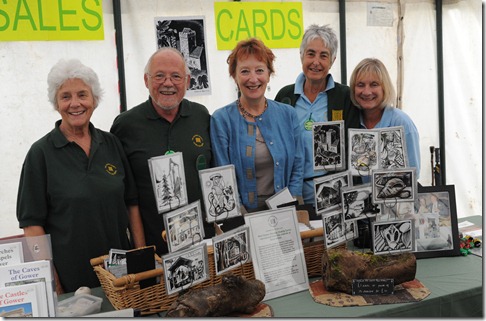
TODAY’S TASK - The next few drawing days will help you to use line in interesting ways and to look at a way of drawing 3D objects using straight lines. Several of you are probably know how to use the principles of perspective, so please challenge yourself to draw more complex objects or objects from unusual angles. I hope these basic tips in today’s lesson will help those who have no experience, but nothing beats looking very hard at your object – with your brain as well as your eyes.
TODAY’S TIPS - Remember 2 things -
Shapes appear to get smaller as they get further from you. Further away is towards the top of the page. Closer to you is at the bottom of the page.
Very important - all upright shapes stay upright!
I drew these without a ruler so try this yourself as this is not a geometry lesson. Press lightly with the first line to judge whether it looks right; make changes, again using a light pressure. Make your line darker when you feel it is right. No need to rub out the lighter lines as these will all add up to being part of the character of your sketch. I have rubbed out a few lines in these drawings below to make them less confusing as a teaching aid.
The basic plan – Draw 2 lines at an angle from one side of the page to the other that are not quite parallel but seem to taper slightly in the direction of the arrows in this drawing. Draw another two lines that taper in the opposite direction, with arrows facing the other direction.
Left image - Where these 4 lines cross, draw lines in a downward direction. Make these parallel to the left and right edges of your page. These lines will indicate the legs of your imaginary table – remember – all upright shapes stay upright!
Middle image – Decide on the height of your imaginary table by marking a point [A] on the near leg. Draw 2 more tapering lines through this point one in one direction and the other in the opposite direction. These two new tapering lines should follow the taper of the first sets of tapering lines you drew. As these new lines pass through the lines for the left and right legs, these points will indicate their base [B and C].
From these points [B and C], draw 2 more tapering lines, again following the direction of the other lines, but still trying to create a slight taper as the lines move towards the top of the page. These 2 lines should meet at the base of leg D. If this doesn’t happen, check that you have made all the tapering lines look as if they are disappearing into the distance by very gradually looking as if they would all join into a point, well off your page, to the right and a point to the left.
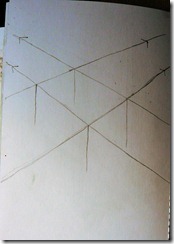
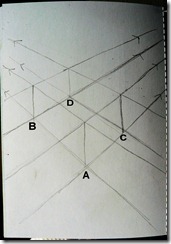
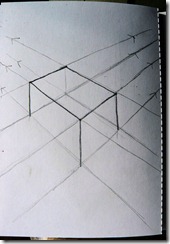
Right image – Draw bold lines to show your imaginary table or perhaps a box.
You will notice that this ‘table’ or ‘box’ looks as if it is being viewed from a height – as if you are looking down at the table from the ceiling. So I suppose it looks more like a brick or box shape as we are more used to viewing smaller objects from above.
To change the angle of view, you need to change the angle of your tapering guidelines. Notice how the lines in the drawing below are different to the ones above and produce a table/box shape viewed as if you are looking at it from a lower position.
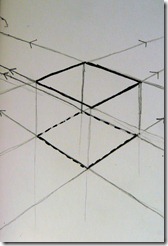
Perhaps you can get the idea from these two woodcuts by my father, Edward Martin – one viewed from high up, looking down into the church in Cheriton Valley on the left and on the right, looking upwards from the road towards the church in Llangennith
To help you gauge the best angle for a particular drawing, hold a straight edge up in front of your eye. You’ll notice the ‘learning’ drawing on the right is not totally accurate as I have simplified it to help me understand it first. I was pleased to be able to make the legs and arms look solid.
Tomorrow I’ll use my experience of drawing these lines to make drawings that are freer and more characterful of my garden chair. I hope you’ll find this preparatory stage intriguing.

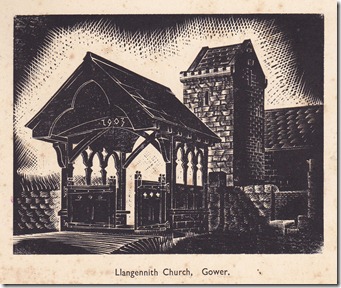

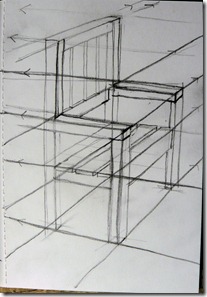
No comments:
Post a Comment